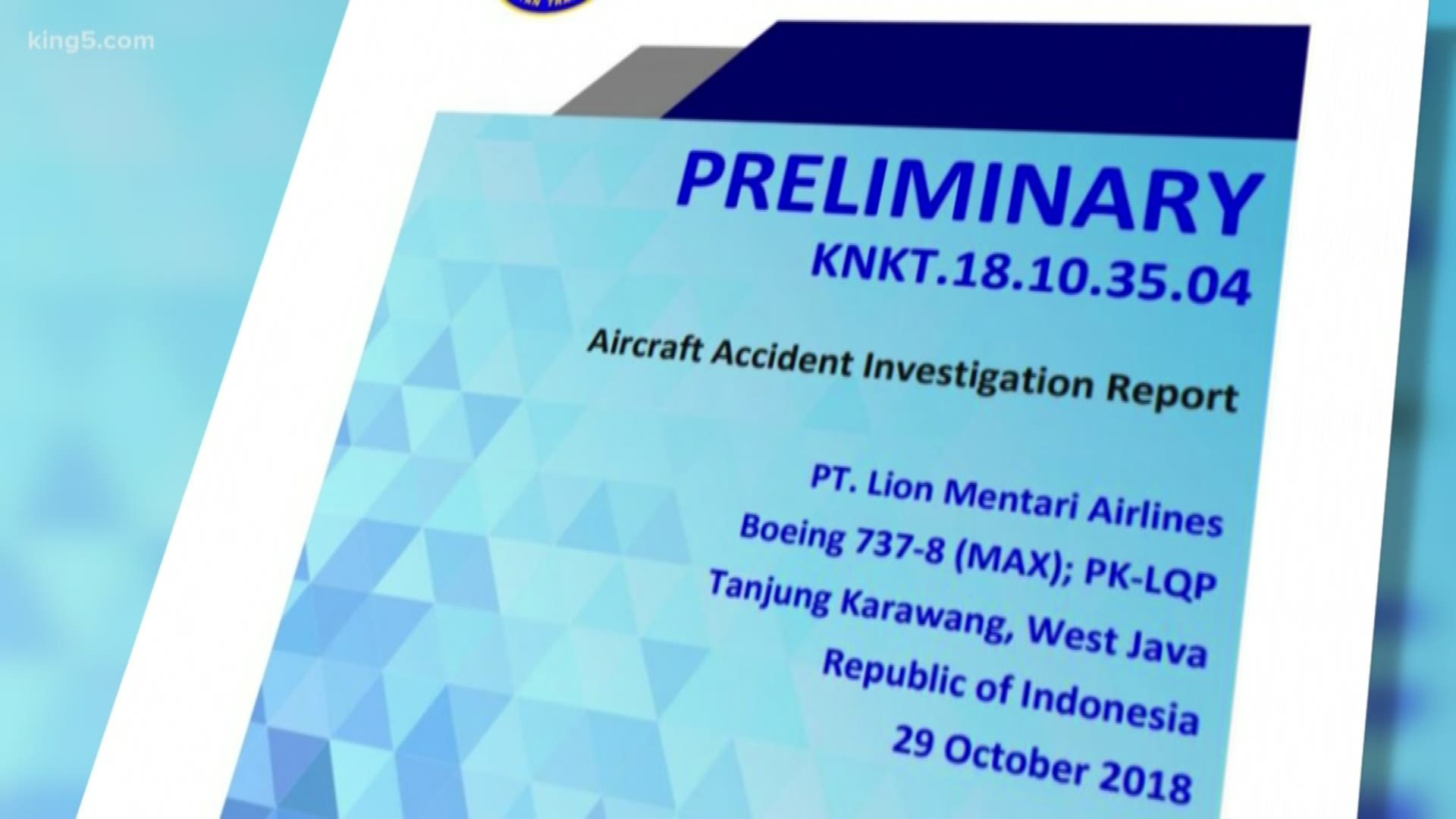The pilots flying Lion Air flight 610 knew immediately upon takeoff that their flight was in trouble.
During takeoff, a warning on the Boeing 737 MAX 8’s system called a “stick shaker” went off in the cockpit, shaking a control column used by one of the pilots to control the plane.
Indonesian authorities released a preliminary investigative report into last month’s deadly crash that killed all 189 people on board this week.
It begs the question whether this Boeing 737 MAX 8, although just two months old, was airworthy after problems with the plane’s avionics showed up three days before the crash and efforts to fix them failed.
The National Transportation Safety Commission's Nurcahyo Utomo said investigators were trying to figure out from interviews with engineers why they certified that the Boeing 737 MAX 8 was airworthy and whether they had followed required maintenance procedures.
Pilots of previous flights had reported problems with control systems on the brand-new jet.
The board issued a preliminary report that stopped short of placing blame for the crash — the investigation is continuing — but it provided new details about the pilots' struggle to fly the highly automated jet and Lion Air's inability to fix problems with sensors on the plane.
Sensors that measure speed were flushed and checked, and an electrical plug was cleaned before the fatal flight. Mechanics, however, did not check sensors that measure whether the nose of the plane is pointing up or down.
In a statement following the release of the report, U.S.-based Boeing declared that the MAX, its newest plane, is safe. The manufacturer played up the possibility of pilot error.
Boeing noted that the crew of the plane's previous flight one day earlier had responded correctly to the automatic nose-down pitch and flew the plane manually. They also ran safety checklists. The preliminary report does not say whether pilots on the deadly flight took those steps, Boeing pointed out.
The malfunctions and warnings from the plane's control system appeared to overwhelm the pilots almost as soon as the jet became airborne, said another investigator, Ony Suryo Wibowo.
"The problem is if multiple malfunctions occur all at once, which one should be prioritized?" Wibowo said.
Boeing has said that the procedure to correct an automatic nose-down pitch is in the plane's operating manual, and pilots should have known about it.
Several experts said, however, that Boeing likely will have to consider changes in the new anti-stall system, perhaps developing an algorithm to disregard sensor readings that appear off-base.
The report offered new details on persistent problems with sensors on the Lion Air jet and the airline's efforts to fix them.
John Cox, a safety consultant and former airline pilot, said Lion Air should have taken the troubled plane on a maintenance test flight.
"I don't think the airplane was ready for passenger service because they had not validated that they had fixed the problem," he said.
Mary Schiavo, a former inspector general of the U.S. Department of Transportation, said the preliminary report offered a roadmap of final recommendations that are likely to emerge from the investigation.
"They will be looking for more precise reporting of problems (by pilots), and certainly a better maintenance response," she said.
Searchers have not yet recovered the plane's cockpit voice recorder, which could tell investigators what the pilots were doing — or failing to do — to regain control of the plane during the brief, erratic flight.
The investigation will next head to Seattle and the 737-MAX engineering simulator where investigators will attempt to exercises to better understand what happened.

